Coastal sand ecosystems restoration
Gulf Islands National Park Reserve
Overview | Garry Oak Islet | Sea garden | Salmon stream |Coastal sands |Volunteer
Rare ecosystems
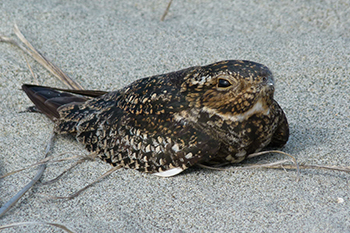
Crowded out
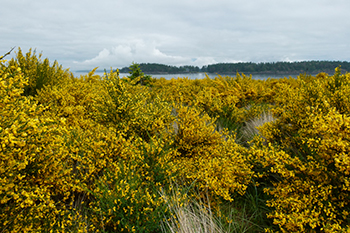
To the rescue

Many rare plants and animals depend on the teardrop: Common Nighthawk, Contorted-pod Evening-primrose, Edwards’ beach moth, Silky Beach Pea, Yellow Sand-verbena and American glehnia.
Weaving together Indigenous knowledge with western science

Image right: by Sarah Jim, PḰEĆEN,ENEȻ icon (p-kw-uh-chin-uh-nook/coastal sand ecosystems)
Through the Growing Together Conservation and Restoration (CoRe) project, Parks Canada collaborates with Coast Salish First Nations to restore the Coastal Sand ecosystems in Gulf Islands National Park Reserve.
We are thankful to the Quw'utsun and W̱SÁNEĆ Nations for sharing their knowledge of the land and water.
In 2021, W̱SÁNEĆ artist Sarah Jim designed the PḰEĆEN,ENEȻ (p-kw-uh-chin-uh-nook/coastal sand ecosystems) icon to represent the work of the Growing Together project.
Artist statement by Sarah Jim:
The collaborative work between the W̱SÁNEĆ and Parks Canada inspired this design. It represents the restoration and conservation of species at risk and culturally significant plants and animals within the PḰEĆEN,ENEȻ (p-kw-uh-chin-uh-nook/coastal sand ecosystems). This is a specialized ecosystem that only exists within W̱SÁNEĆ territory. Naturally, it has shaped the culture and the creatures within this habitat. The Common Nighthawk and Edwards’ Beach Moth rely on this ecosystem because they have coevolved together. Yellow Sand-verbena, SȽE,QÁI (sluh-kw-ay-ee/Dune Grass), Silky Beach Pea, Contorted-pod Evening-primrose, and KEXMIN (kuxh-meen/Wild Celery) are species at risk that are culturally significant to the W̱SÁNEĆ. KEXMIN seeds have been spiritual and physical medicines for time immemorial. These plants and animals are surrounded by these seeds to give them strength.
The two hands are holding up the plants and animals to give thanks and honour their importance to the ÁLEṈ,ENEȻ (ay-lung-uh-nook, homelands, ecosystem). The hands are also a symbol of the human intervention of the conservation and restoration that is taking place and the growing relationship between the W̱SÁNEĆ and Parks Canada.
Each plant and animal is adorned with Coast Salish elements. This signifies their importance to the W̱SÁNEĆ and establishes a sense of place; these beings belong in their ancestral homelands. All aspects of the land have shaped W̱SÁNEĆ language, art, culture, and worldview. Not only are ecosystems being restored, W̱SÁNEĆ culture is being revitalized and relationships between the first people and settlers are beginning to grow.
Volunteer power
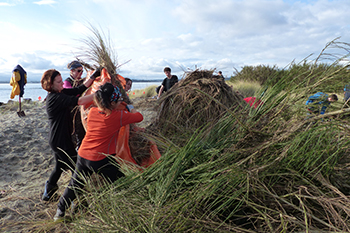
Tiny plant, big recovery!
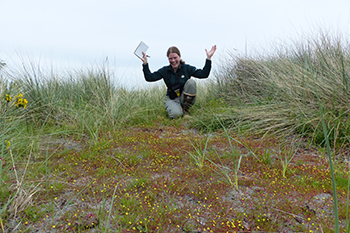
Our commitment: to protect
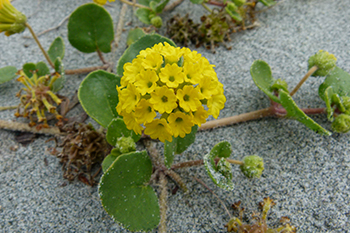
Find out more about volunteering for this project.
- Date modified :